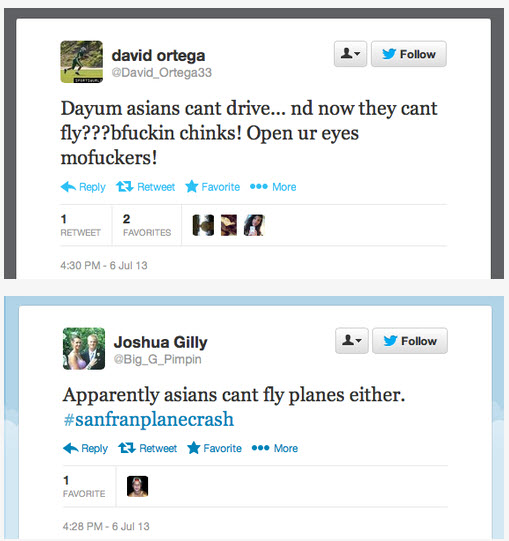I shouldn’t be surprised or disappointed anymore, and accept the fact that there will always be idiotic people in the United States who probably function perfectly normally most of the time, and then turn into stupid racist haters the moment there’s some sort of tragedy in the world that involves people of color. Two years ago, I was dumbfounded that Americans would rant and rave about the Tohoku earthquake and tsunami in Japan and claim it was somehow “god’s revenge” for Pearl Harbor. What?
But the glibness and ease with which such racist drivel finds its way from pea-brained individuals to the social webs is still shocking. Here I’ve been following the crash of the Asiana jetliner at SFO (an airport I often fly to and from) as a human tragedy, but a miracle with only two casualties. I’ve felt empathy for the families of the two schoolgirls who were killed, and the many survivors who were injured. But the fact that most of those onboard survived — and that 123 survivors were able to walk away without being hospitalized — is nothing short of amazing.
But of course, the human stories of the crash don’t matter to the racists who immediately feel the need to respond with jokes about Asian stereotypes (we’re lousy drivers, har har) and hateful cracks about North Korea (hellooo, Seoul is in South Korea, and this was not an attack by Kim Jong Un on the US).
That such a lowbrow, juvenile mentality switches on so quickly shows that racism and prejudice are still alive and well just beneath the veneer of political correctness that the haters always complain about. Scratch the veneer just a bit with a news event like this tragedy, and you’ll see nothing but ugliness ooze out.
That’s why I write about these issues over and over.
Continue reading






 The Washington Post ran
The Washington Post ran 





